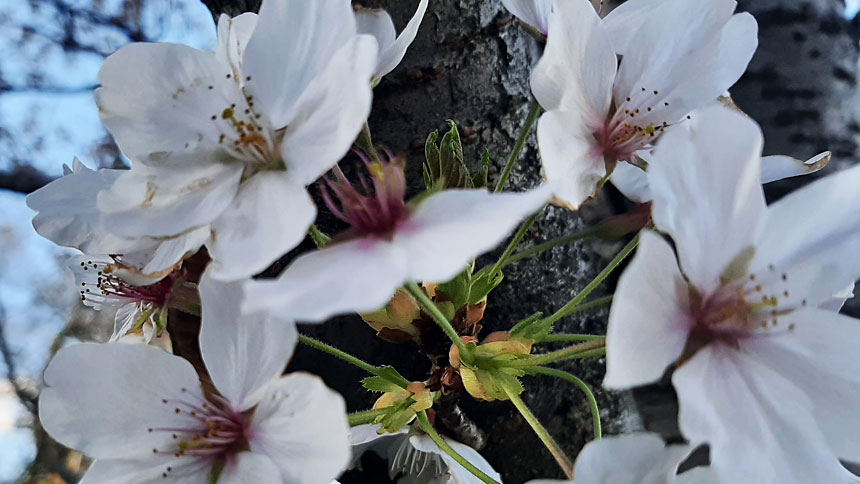
Nothing speaks of spring more than blossoms in March and April.
Since moving to Washington, D.C., several years ago, I’ve become fascinated by the cherry blossoms that blanket Washington’s urban landscape in clouds of pink and white.
Each year I try to organize special activities to help our elderly residents participate in our city’s annual Cherry Blossom Festival.
Since the festival was shut down last year due to the pandemic, I was even more excited about it this year, studiously checking the official Park Service’s Cherry Blossom Watch report daily.
After a few days of exceptionally warm weather, the blossoms reached their peak at the beginning of Holy Week – quite an inconvenient time for us since Holy Week is packed with its own very significant activities. It’s hardly the time to go wandering among the cherry blossoms!
With the ceremonies of Holy Week and Easter Sunday behind us, we ventured out to explore the “sakura,” as they are called in Japanese, on Monday. But even the trees considered to be “late blooming” were well past their prime.
As we gazed upon the flower petals blanketing the footpaths rather than the trees, I realized an important lesson. The Japanese celebrate the “sakura” because they symbolize the fleeting nature of life. For them, spring is a time to contemplate the brevity of life and to practice gratitude and mindfulness by being present in the moment.
When the cherry blossoms hit their peak in Japan, life pauses for a few days and people gather under the trees to picnic and enjoy their fleeting beauty. They know that nature is not governed by human convenience, even though we often assume that we can control everything around us.
The pandemic taught us the patience of waiting for nature to take its course. The cherry blossoms teach us to seize the graces of each unrepeatable moment.
I learned a second, even more important lesson from Japanese culture this spring, one that is uniquely relevant to our elderly residents. As I delved into Japanese culture I discovered “kintsugi,” a term referring to the repair of broken pottery. Through the process of kintsugi artists mend broken vessels by filling the cracks with gold. Damage is not hidden but accentuated.
According to Japanese tradition, when something has been broken it acquires a history and is thus transformed into something more beautiful and valuable. This philosophy is also applied to human experience.
Although the philosophy of kintsugi originated outside our Christian faith, it resonates with it.
As we journey through life’s ups and downs, God teaches us to look on traumatic events in a positive way, taking the best from them and embracing our inevitable cracks and scars as treasures that make us more beautiful in God’s eyes – and more aware of our need for him.
Old Testament prophets spoke of God as the potter forming us like clay in his hands. St. Paul reminded us that we carry our treasure in earthen vessels, “that the surpassing power may be of God and not from us” (2 Cor 4:7).
Paul appealed to believers not to be discouraged by their brokenness. “Although our outer self is wasting away, our inner self is being renewed day by day. For this momentary light affliction is producing for us an eternal weight of glory beyond all comparison as we look not to what is seen but to what is unseen” (2 Cor 4:16-17).
St. Peter also saw value in trials: “For a little while you may have to suffer through various trials, so that the genuineness of your faith, more precious than gold that is perishable even though tested by fire, may prove to be for praise, glory, and honor at the revelation of Jesus Christ” (1 Peter 1:7).
We have not seen a case of the coronavirus among our residents for many months, but it is evident that the pandemic has taken a toll. Some residents seem less sure on their feet; for others their vision, hearing or memory seem less clear.
Yet when we talked about the concept of kintsugi, our seniors agreed that they are proud of having survived this tough period, and like worn vessels repaired with gold, they look on their aches and limitations as precious scars that prove their inner strength and resilience.
Sister Constance Veit is director of communications for the Little Sisters of the Poor.

